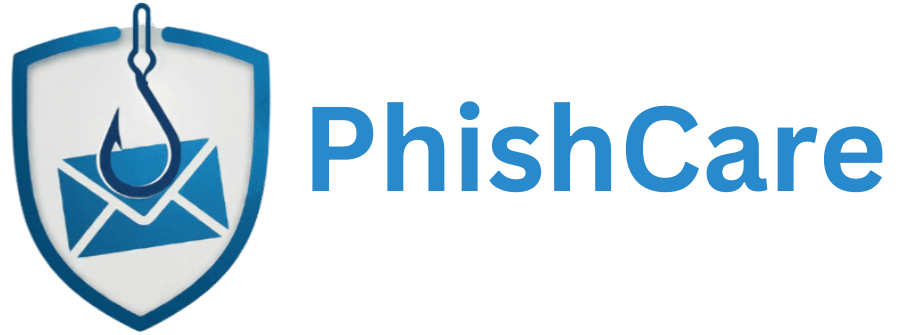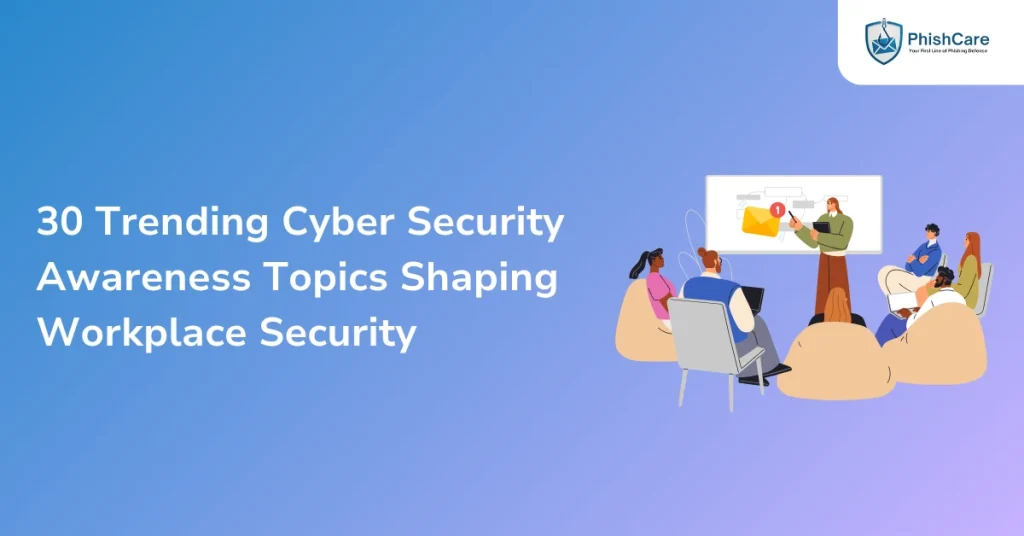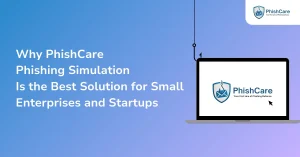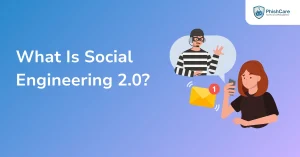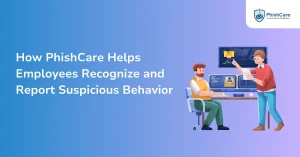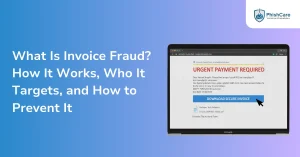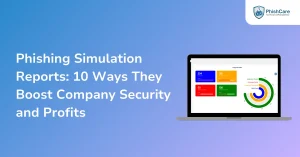Cyber threats are evolving faster than ever, and employees remain the first line of defense. From phishing scams to data leaks, one careless click can expose an entire organization to risk. That’s why cyber security awareness is no longer optional, as it’s essential.
To keep teams sharp, organizations are turning to advanced phishing simulation services and ongoing cyber security awareness training that help employees recognize and resist attacks before they cause harm.
One of the most effective solutions in this space is PhishCare, a cutting-edge phishing simulation tool developed by PhishCare allows businesses to launch simulated phishing campaigns, assess employee response, and deliver targeted anti-phishing training for employees, all to build a truly cyber-resilient workforce.
Let’s explore 30 trending cyber security awareness topics that are shaping safer, smarter workplaces today.
1. Phishing Awareness and Detection
Phishing remains one of the most common entry points for attackers. Employees must learn how to identify phishy emails, suspicious links, and fake login pages. Regular phishing simulation services help reinforce awareness and turn instinctive clicks into cautious checks.
2. Email Phishing Tests
Running an email phishing test is an effective way to measure your team’s response to deceptive emails. Tools like PhishCare’s phishing simulation service can safely replicate real-world phishing attempts to highlight vulnerabilities and track improvement over time.
3. Social Engineering Awareness
Attackers often manipulate human behavior rather than technology. Cyber Security awareness training should include social engineering tactics such as baiting, pretexting, and tailgating to help employees recognize manipulation attempts.
4. Password Security and Management
Weak passwords are one of the biggest threats to workplace security. Training employees on password managers, passphrases, and avoiding reuse across accounts can prevent easy breaches.
5. Multi-Factor Authentication (MFA)
Using multi-factor authentication adds an essential layer of defence. Even if passwords are compromised, MFA helps keep hackers out. Include this in every corporate phishing awareness program for maximum protection.
Why PhishCare is Ranked the Best Phishing Simulation Tool and Security Awareness Training

- Customizable Templates
- Awareness Module
- Assessment Test
- Comprehensive Tracking
- Graphical Dashboard Access
- Campaign Report
- Custom Domain Integration
6. Phishing Attack Simulation
A phishing attack simulation mirrors real-life attacks, teaching employees to pause and think before clicking. It also supports phishing prevention training, offering real feedback and guidance for better results.
7. Safe Browsing Practices
Educate employees on avoiding unsafe websites, pop-ups, and fake downloads. Cybercriminals often use malicious websites and trojan downloads to compromise systems and steal credentials.
8. Data Privacy and Handling
Every employee should understand how to store, handle, and share sensitive information responsibly. Awareness of regulations like GDPR helps reduce unintentional data leaks.
9. Vishing (Voice Phishing)
Vishing attacks, using phone calls to trick users, are rising. Training staff to verify caller identities and never disclose sensitive data over calls strengthens defenses.
10. Smishing (SMS Phishing)
Fake text messages urging urgent actions are common phishing tactics. Teaching staff to spot such phishing scam emails and SMS messages builds resilience across all digital communication channels.
11. Phishing Risk Assessment
Conducting a regular phishing risk assessment helps organizations gauge their readiness. Combined with managed phishing simulation services, it provides actionable insights to strengthen employee behavior and policies.
12. Cloud Security Practices
As businesses move data to the cloud, awareness around access control, encryption, and virtual private network usage becomes crucial for protecting corporate assets.
13. Recognizing Catfishing and Online Impersonation
Attackers may pose as trusted individuals or executives. Employees must learn to verify online identities to avoid catfishing traps that lead to credential theft or data loss.
14. Phishing Resilience Training
Phishing resilience training focuses on behavioral reinforcement. By using phishing simulation tools like PhishCare, organizations can measure and improve employee reactions to various phishing scenarios.
15. Reporting Suspicious Emails
Every employee should know how and when to report suspicious emails. This simple step helps stop threats before they spread through the network.
16. Anti-Phishing Training for Employees
Anti-phishing training for employees improves threat recognition skills and builds long-term awareness. Programs should include hands-on tests and feedback to make the learning stick.
17. Simulated Phishing Campaigns
Running simulated phishing campaigns keeps awareness fresh. With a phishing simulation service, you can test employees periodically and compare performance across departments.
18. Staff Phishing Awareness Program
A staff phishing awareness program ensures everyone, from interns to executives, understands their role in cyber defense. Regular refreshers help maintain vigilance throughout the organization.
19. Mobile Device Security
Employees using smartphones for work must secure them with screen locks, software updates, and cautious app installations to avoid malware infections.
20. Cybersecurity Phishing Test
A cybersecurity phishing test evaluates the organization’s preparedness against evolving phishing threats. It’s an essential part of a robust phishing prevention training cycle.
21. Workplace Phishing Awareness
Creating a culture of workplace phishing awareness empowers employees to act as active defenders. Encourage discussions and knowledge-sharing to normalize cautious behavior.
22. Employee Phishing Awareness Training
Ongoing employee phishing awareness training reduces the chances of falling for fake invoices, password-reset scams, and fake email threats that often bypass filters.
23. Cybersecurity Hygiene
Just like personal hygiene, digital hygiene matters. Teach employees to update systems, avoid public Wi-Fi for sensitive work, and recognize signs of compromise.
24. Phishing Training for Organizations
Phishing training for organisations builds a unified security mindset across teams. Tools like PhishCare’s phishing simulation service can be customised for each department’s risk level.
25. Zero-Day Awareness
Employees should understand what zero day vulnerabilities are: unknown flaws exploited by attackers before patches are released, and how to respond when vendors issue urgent updates.
26. Remote Work and VPN Safety
As hybrid work continues, virtual private network awareness and secure remote access habits are vital for keeping corporate networks protected from intrusions and remote access trojans.
27. Spam and Junk Email Handling
Teaching staff how to manage spam and email phishing scams safely can prevent malware downloads and accidental data exposure.
28. Social Media Safety
Employees often share more than they realize online. Training them to avoid revealing sensitive company details on social platforms helps prevent social engineering attacks.
29. Insider Threat Awareness
Sometimes, the risk comes from within. Training should cover identifying unusual behavior or unauthorized data access attempts from internal users.
30. Phishing Prevention and Long-Term Resilience
Building a sustainable cyber culture requires regular reinforcement. Combining corporate phishing awareness programs, phishing risk assessments, and phishing resilience training ensures long-term readiness against threats.
Empowering a Phish-Resistant Workforce
Modern businesses face evolving threats every day. While technology plays its part, the strongest defense remains an alert, well-trained workforce. That’s where advanced phishing simulation services come in.
PhishCare by CyberSapiens is designed to help organizations run realistic phishing attack simulations, deliver actionable insights, and conduct comprehensive phishing prevention training. With tailored anti-phishing training for employees, it transforms vulnerability into vigilance, making every employee a proactive defender.
By investing in awareness and leveraging tools like PhishCare’s managed phishing simulation service, organizations can foster a resilient security culture ready to face whatever cyber criminals throw their way.
FAQs: 30 Trending Cyber Security Awareness Topics Shaping Workplace Security
1. What is a phishing simulation service and why is it important for workplace security?
Answer: A phishing simulation service helps organizations test how employees respond to fake phishing emails in a controlled environment. It identifies security gaps and strengthens awareness through practical, real-world learning.
2. How does a phishing simulation tool help reduce cyber risks?
Answer: A phishing simulation tool trains employees to recognize suspicious emails, report them correctly, and avoid clicking malicious links—reducing the risk of real phishing attacks.
3. What are simulated phishing campaigns?
Answer: Simulated phishing campaigns are controlled exercises that mimic real phishing attempts. They help measure employee response rates and identify who needs more phishing prevention training or anti-phishing training for employees.
4. How often should companies conduct phishing training for organizations?
Answer: Experts recommend running phishing training for organizations at least quarterly. Regular sessions ensure that employees stay updated on the latest tactics used by cybercriminals.
5. What is the role of a corporate phishing awareness program?
Answer: A corporate phishing awareness program builds a culture of vigilance by combining cybersecurity phishing tests, simulations, and continuous phishing resilience training to keep employees alert against new phishing threats.
